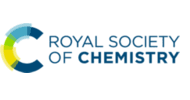
RSC Applied Interfaces publishes interdisciplinary work with an applied focus, which can be read for free here. To celebrate the excellent articles that have been published so far in our journal, we asked some of our authors to discuss their work in more detail.
In this post, we hear from Swapnil Das at New Jersey Institute of Technology, as they discuss their recently published article entitled ‘Interaction of vapor-phase and liquid organophosphonates with inorganic surfaces‘.
Discover the full article here
 Interaction of vapor-phase and liquid organophosphonates with inorganic surfaces
Interaction of vapor-phase and liquid organophosphonates with inorganic surfaces
Swapnil Das, Mirko Schoenitz and Edward L. Dreizin
RSC Appl. Interfaces, 2025, 2, 352-363
DOI: 10.1039/D4LF00420E
Insights from the Authors
In their detailed review published in RSC Applied Interfaces, the authors explore how vapor- and liquid-phase organophosphonates—specifically dimethyl methylphosphonate (DMMP) and diisopropyl methylphosphonate (DIMP)—interact with a variety of inorganic solids, such as metal oxides, halides, and perchlorates. These organophosphonates serve as non-toxic simulants for chemical warfare agents (CWAs), and understanding their behavior is critical for developing effective decontamination and agent defeat strategies. The study finds that the phase in which these compounds initially contact the surface significantly influences the strength and nature of the molecular interactions that follow. Vapor-phase interactions tend to produce stronger surface-bound residues, indicated by more pronounced redshifts in the infrared spectral signature of the P=O bond, while liquid-phase residues—especially those on oxides—exhibit comparatively weaker bonding. The authors compile and analyze extensive spectral data found in the literature. Consistent correlations are found between the redshifts of the infrared P=O adsorption band and key material parameters such as ionization energy, formation energy, and electronegativity. These correlations provide valuable predictive insights into how different surfaces interact with toxic agents.
Meet the author
 Swapnil Das
Swapnil Das
Swapnil Das is a Ph.D. candidate in the Department of Chemical and Materials Engineering at the New Jersey Institute of Technology, Newark, NJ. He works under the guidance of Professor Edward L. Dreizin. Swapnil’s research, funded by the Defense Threat Reduction Agency (DTRA), centers on understanding the mechanisms of rapid decomposition of chemical warfare agents (CWAs). Such processes often involve combustion and high temperatures. The present laboratory studies use CWA surrogates, non-toxic organophosphonates, such as DIMP and DMMP. Both evaporated and liquid surrogates interact with metal oxides and combustion-derived particulates in different experiments. Swapnil’s work provides critical insights into the surface chemistry and residue formation governing the breakdown of toxic molecules, ultimately contributing to the development of safer methods for neutralizing and containing hazardous substances in real-world scenarios.
Webpage link: https://web.njit.edu/~dreyzin/Advanced-Energetics/
LinkedIn Profile: https://www.linkedin.com/in/swapnil-das/
 RSC Applied Interfaces is a dedicated, interdisciplinary reference journal for cutting-edge research on the applications of surfaces and interfaces. In addition to the applied focus, work considered for publication in RSC Applied Interfaces is expected to be highly original and of top quality. The journal seeks to report major scientific advances beyond the state of the art, at the cutting edge of this interdisciplinary field.
RSC Applied Interfaces is a dedicated, interdisciplinary reference journal for cutting-edge research on the applications of surfaces and interfaces. In addition to the applied focus, work considered for publication in RSC Applied Interfaces is expected to be highly original and of top quality. The journal seeks to report major scientific advances beyond the state of the art, at the cutting edge of this interdisciplinary field.
➤ Find out more about the journal

